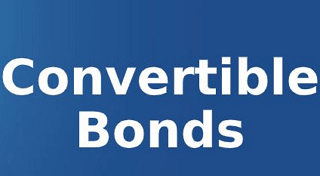A convertible bonds that provide a high yield to its investors

A convertible bond investment provides an attractive return to its owners in turbulent market conditions by businesses that are doing well and are penalized in such situations. That is why investments like convertible bonds appear more attractive when compared to other investments. Also, these investment sources offer the income and safety of a bond, conjoined with the upside possibility of a call option.
How the convertible bonds work
Convertible bonds are fixed-income asset that provides a dividend to investors. Like traditional bonds, convertible bonds offer regular income and return all the principal invested amount at the time of maturity. However, these bonds can be used for other purposes as well.
The name implies that bonds issued by a company can be "converted" into shares in the company that issue the bonds. Conversion occurs with a set ratio of conversion as well as a price. The bonds may be converted at any point throughout the duration of the convertible bonds.
Here is an example: Let's say a business issues convertible bonds that yield 5 percent with the maturity date set for July 11, 2025 (three years from today). The bonds have a conversion rate of 10:1. Therefore, we can convert the bond into ten company stock shares.
Suppose the bond is priced at $1,000. We can purchase ten bonds for an overall purchase of $10,000. We can anticipate receiving 500 dollars (or 5%) each year.
Within three years, we will be able to redeem all the capital we have invested. In the current market situation, it is an attractive choice. Our primary investment is secure, and we earn income while sitting on the market sidelines.
The most exciting part is the option when we can convert. The ten bonds we have purchased allow us to buy 100 shares of the company. If we invest $10,000, we would be able to acquire 100 shares at a specified conversion price.
Whenever convertible bonds are administered, they include a conversion price above the market price at which they are traded. Investors should never think of swapping until the stock price increases well above the conversion price.
So, while the market is turbulent, investors can wait patiently and collect dividends from bonds. So we can weather the storm without worrying about the volatility of stock prices and also not need to be concerned about getting our initial capital back and being paid a dividend as we await to market to settle down.
Let's look at the possible upside potential with more appeal than the one I have just pointed out above.
Imagine that we keep this fixed-income asset for two years, earning an average of 5 percent. As we all know, many unforeseeable things can occur within two years. Nevertheless, if the conversion price was at $100 for a 10 to 1 ratio and the underlying share price increased to $150, an investment of $10,000 could have brought us the equivalent of $5,000, which is 50 percent. Since we received an annual 5 percent return over the previous two years, our overall investment return is $6,000, which equals 60 percent.
The benefit of this investing style is that it mixes the security and yield of bonds with the potential for the upside of excellent technology equities. When you review the available inventory of convertible debt offers and find the types of opportunities, there may be surprises.
With minimal effort, investors have created an essential database of secure convertible debt options for companies in the field of technology, with many that offer yields that range between 5% and 75%.
The possibility of changing them into shares when the prices increase makes them extremely attractive in this current investment climate. This is why we'll look at these convertible bonds for the foreseeable future. However, that is not the only type of fixed income I would be presenting to you, dear readers, on this type of investment idea.
Final note
Given the current economic conditions, there is no time to jump into stocks. I recommend investing a set amount of money regularly, bi-weekly or monthly, in convertible bonds.
Bear in mind that I'm unable to provide personalized investment advice. However, I hope the strategy I've described above will give valuable tips for your investment strategy.
This article was printed from TradingSig.com